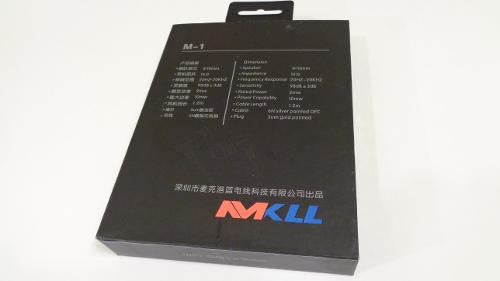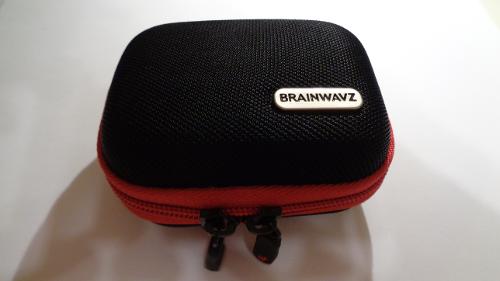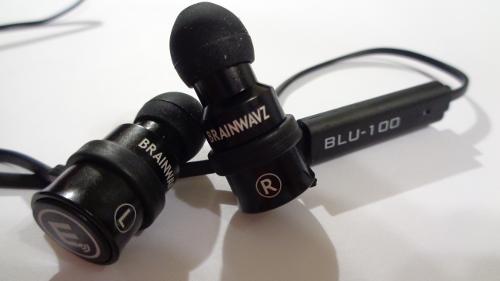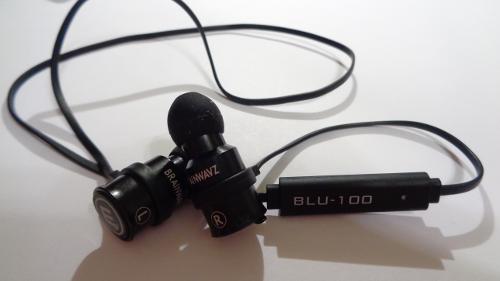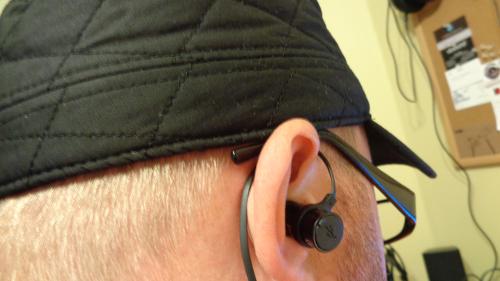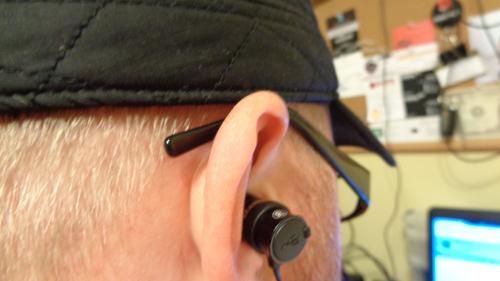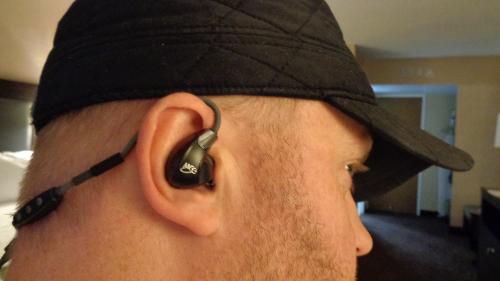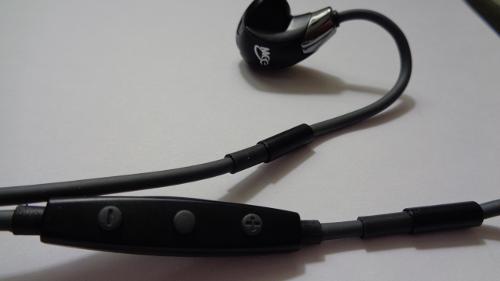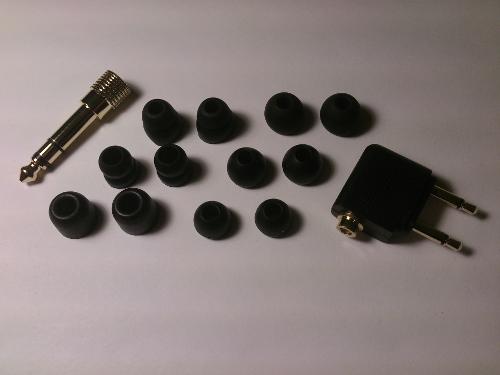At the time this review was written, the Fidue A73 in ear monitor was on sale for $149.00 USD on Penon Audio’s website. Here is a link to a listing of their product at the time of the review.

http://penonaudio.com/FIDUE-A73
Introduction
The highlight of my short tenure of writing reviews was covering the Fidue A83. It was my first time experiencing a Fidue in-ear monitor and after using the A83, I knew it wasn’t going to be my last. When the A73 was released I purchased it on the spot, and with absolutely no regrets. The A73 is an in-ear monitor that took the success of the A83 (I gave it five stars) and customer feedback (small issues regarding the fit and sound) and tweaked their tuning, ergonomics and PRICE. They made what is my favorite in-ear monitor to date. Please read more to find out why!
Disclaimer
The A73 was purchased from Penon Audio. I am in no way affiliated with Fidue or Penon Audio.
My Background
I AM NOT a numbers and graphs audiophile or sound engineer. Personal audio enthusiast? Absolutely! Headphone junkie? Possibly…
There’s something about quality DAPs, DACs, Amplifiers and Earphones that intrigues me, especially if they can be had for low prices. I will buy the $5 to $500 earphone that looks promising, in hopes that I will discover that one new gem that can compete with the big names in this industry. If you look at my Head-Fi profile you will see that I have purchased MANY different headphones and earphones, ranging from from dirt cheap to higher end products. For me, this hobby is more about getting great price to performance ratio from a product, and have a variety of different gears with varying builds and sound to mix and match. With personal audio gear, we tend to pay a lot of money for minor upgrades. One thing I’ve learned over the last few years is that just because a headphone has a higher price tag, it doesn’t mean that it has superior build and sound quality.
I’m always looking for great audio at a great price. I’m after headphones and IEMs that give me the “WOW” factor. I can appreciate different builds and sound signatures as long as they are ergonomic, and the sound is pleasing to the ear. It is my pleasure to share my experiences with audio products and make recommendations based gear I have owned and used.
REVIEW
The Package


The A73 was one of those packages that I had to make sure I checked the tracking on my phone several times each day, for no other reason than sheer anticipation. When they arrived, I was greeted with a sharp black and green box much similar to the A83. There was a description of the product and key features, along with a nice picture image of the IEM. The back of the box had specifications in three languages.
Specifications:
- Driver: Φ10mm Exclusive Dynamic & Balanced Armature Drivers Frequency
- Frenquency Range: 13-27,000 Hz
- Sensitivity: 107dB
- Max Input Power: 20mW
- Distortion: <1%
- Plug: 3.5mm stereo, gold-plated (MP3, iPod, iPhone & iPad Supported)
- Cable: 1.3 m
- Sensitivity of Mic: -42+-3db
- S/N Ratio of Mic: >55db
 Accessories:
Accessories:
- Silicone eartips (S/M/L)
- Double flange silicone eartips
- shirt clip
- High quality Leather Carrry case
Housings
The housings are a combination of metal and plastic similar to the A83, but with a more ergonomic shape that better fits my ears. The outside of the housings appears to be metal with a brushed nickel or aluminum finish. The inside of the housing is a transparent crimson/wine colored plastic that reveals the innards of the A73. I find the housings to be very nicely built and very good looking. The hozzle angles out of the inside of the housing and is designed for over the ear fit. All in all its sharp looking, has a sturdy build, an ergonomic design and a great fit.




I think they checked all the boxes on this one...
Cable, Y-split, Cable Jack, Strain Reliefs
The cable is a rubbery transparent gray cable that shows traces of the inside cable cores. It has very little memory and a small amount of spring. It's nowhere near as solid or heavy duty as the A83 cable but it is sleek, discreet and ready for daily use.
The Y-split is a Crimson rubber material coated in a aluminum tubing that displays the Fidue logo. The build is sleek and solid.
The cable jack is a straight plug that uses the same materials as the Y-split. It's a straight plug and seems to be well built and able to withstand the test of time.
Strain Reliefs are a rubber material that is a similar transparent crimson color to the housing. I find the material to be spot on and perfect for strain relief. I don’t see this cable shorting out any time soon.

Boxes for all criteria were checked for this section.
Functionality
The A73 has a single button remote and microphone that works for both Iphone and Android (very smart) and is located just above the Y-split on the right side. When talking to friends and family, most reported my voice clarity to be at a four on a scale from one to five.
It checks boxes in terms of being just right for features I need, and nothing I don’t.
Ergonomics, Fit and Microphonics
The over the ear fit is perfect in my opinion. I had no problem getting them to fit. Once situated in my ear, I almost never had to adjust them. Your mileage may vary, and tip selection plays a big part in this, but for me they are one of the best fitting IEMs I’ve ever worn. They aren’t designed to be worn under the ear but it can be done without a problem. However it looks kind of awkward.

Note: The cable didn’t have a chin slider. Although, not necessary, I feel that this is one feature that would have improved the product’s fit.
Sound Review & Materials
I primarily did my demo with my usual gear. I used an LG-G3 with the latest firmware, and Sony Walkman F806/Cayin C5 amplifier for portable use. For desktop I used my Toshiba Satellite Laptop in combination with a HIFIMEDIY Sabre ES9023 USB DAC/Bravo Audio Ocean Tube amplifier with a Mullard 12AU7 tube for higher impedance, and a Fiio E18 USB DAC & Amplifier for lower impedance products. Both were run at 24 bit, 96000 Hz. I also tested them with other DAPs/DACs and amplifiers as well. I used Google Music downloaded in its highest download quality (320 KBPS) and I also streamed FLAC via Tidal streaming service. I make sure that any gear I tested has has enough time play time for me to be able to confidently describe their sound.
I used my usual same songs for testing gear:
“Limit to your love” by James Blake (bass speed, punch, response)
“Doin’ it Right” by Daft Punk (sub bass)
“Get lucky” by Daft Punk (bass to midrange transition resolution, male vocals)
“Madness” by Muse (soundstage, separation)
“Some nights” by Fun (soundstage and male vocals)
“The soundmaker” by Rodrigo y Gabriela (texture and imaging)
“Bassically” by Tei Shi (bass to midrange resolution, female vocals)
“Skinny Love” performed by Birdie (female vocals, acoustic playback)
“One” by Ed Sheeran (male vocals, acoustic playback)
“Outlands” from the Tron Legacy Soundtrack (symphonic presentation, imaging)
“Sultans of swing” by Dire Straits (detail, separation, balance)
“And Justic for All” by Metallica (driver distortion, treble response, rock playback)
“Ten thousand fists” by Disturbed (driver distortion, treble response, rock playback)
Note: Other tracks were used, but the listed songs were primarily used to asses and break down the gear’s response.
Sound Signature
I’ll be the first to say that I’ve been a huge fan of hybrid earphones because of their ability to have the bass of a dynamic driver in combination with the details of a balanced armature. As time goes by, this design keeps getting better and better. The A73 is incredible tuning that adds an ever so slight bass lift, warm midrange and treble response that is extended, detailed, crisp and pretty smooth all at the same time. Nothing seems to be over or under done from what I hear. It is a nice combination of power and finesse. It plays all genres of music well. They were especially spectacular for band genres due to their world class separation, timbre and detail. Jazz, Metal, Rock, Classic Rock, and Symphony all sound especially beautiful with these IEMs. I spent a long time listening to both these and the A83 and although the A83 is a more dynamic and entertaining sound, I caught myself reaching for the A73 more often. At the moment I prefer their slightly more linear tuning. Allow me to explain why as I break them down.
Bass
The A73 bass is slightly boosted, beautifully balanced, fast in attack and not intrusive whatsoever. Bass tones were heard/felt as low as 10Hz and rolled upwards to 130Hz before it topped off. There was no significant drop offs and all tones were relatively close. During music playback it seems very balanced to my ears. There is no part of the bass response that seems to jump out in front of the rest of the tuning.
The bass is forward, present and lush, playing along with the music in good balance, hitting every note pretty flawlessly. When called upon by the track to bring some thump it can also do so just as easily. It is a very versatile bass response. During Daft Punk’s “Doin it Right,” the lowest of low bass notes were perfect in tone and not boomy at all (which is usually the case with most IEMs). During Tei Shi’s “Bassically,” there was a level of depth and speed playing the bass lines that yielded a great sense of space and energy. You get punch, you get rumble, you get speed. No, it’s not fast armature bass but in my opinion it's better. It’s more linear and balanced than most bass forward dynamics and more dynamic and weighted than balanced armatures. I hope that makes sense.
Bass quality, Check...
Midrange
Midrange is an epic combination of warmth and resolution. I get a sense of forwardness in ranges just above midbass that make vocals pop. I really like how this is done. To my ears, the vocals take center stage on most tracks and that’s how it should be. Voices sounded very natural and forward at the same time. Pianos had great timbre and speed.
The midrange is somewhat similar to the tuning of the Dunu Titan in the sense that they go from very warm and rich in lower midrange to very crisp and slightly dry upper midrange. The word that comes to mind is “shimmer.” They have a certain amount of upper midrange detail and shimmer that nicely compliments that rich lower mid presence. They are never shouty, and you catch every single micro detail with great resolution and accuracy. The balanced armature inside of these are gems. During Dire Straits’ “Sultans of Swing,” I got lost in picking apart all of the guitars and bass guitars playing at the same time. I think the level of separation on the A73 is world class.
Midrange, Check...
Treble
Treble is my favorite aspect of the A73 in terms of its sound. Often times when higher end IEMs are released, they have a tweaked treble response with a bump somewhere in the upper mids or treble area. This is done to yield a good sense of top end extension and improve soundstage. This is done at the expense of some listeners not being able to tolerate the spike, or get the impression that the earphone is mild to considerably sibilant. The A73 is unique in the sense that it carries the same amount of extension and detail as higher end stuff, but isn’t forward enough to be harsh. It has very clean and crisp sound and feel. There were no harshly pronunciations of the letter S, and cymbal crashes were crystal clear and on the more mellow side of harsh. I could listen to this type of treble tuning for hours without it ever getting fatiguing or feeling like it is lacking in any way. It sounds good at any volume. Dare I say it is some of the best treble I’ve ever heard in an IEM? I did, and with no shame!
Treble response, check...
Soundstage and Imaging
The A73 sounds very open and airy. The beefy sound from the dynamic driver and very detailed and extended sound of the armature driver creates a huge soundstage for an IEM. Imaging is awesome because of the top notch level of detail and accuracy. Simply put, pop them in your ears, play your favorite tracks, sit back, relax, close your eyes, and you will be whisked away to your favorite songs being performed live just for you. The dynamic and armature driver playing in unison really makes the presentation sound multidimensional.
Soundstage? Imaging? Check...
Comparisons
Fidue A83 ($275 to $325 USD on many sites)
If the Fidue A83 is the Shaquille O’neal version of in-ear monitors, the A73 is Kobe Bryant model. While the A83 brings power and an aggressive tuning that impresses me every time I listen to it, the A73 has traits that sets it apart from it’s older teammate, making it equally as effective despite the differences in its game plan and approach.
The A83 is more aggressive and forward in just about every auditory aspect. The bass is more robust and has more rumble. The A73 bass is more linear and with more speed. The upper midrange of the A83 is more forward and shouty in comparison to the A73 softer presentation. The treble of this A83 is more up front and some have said it is sibilant. While I don’t think this is the case, they are forward in comparison to the more relaxed and tolerable treble of the A73.
A83 is up front and aggressive, the A73 is more laid back and relaxed, delivering all the details and balance needed for audiophiles to really appreciate it.
The A83 is the entertainer, the A73 is the professor. A83 is the Incredible Hulk, the A73 is Bruce Banner. A83 is Superman, the A73 is Clark Kent. To make this review more fun, please post more analogies in the comment section below! Just keep it clean guys!
So, while the A83 is in the paint throwing elbows, pulling down rebounds and dunking on people, the A73 is weaving in and out of traffic, picking the opposition's pockets and nailing twenty foot fade away jumpers.
If I want to play an action flick with lots of music and explosions, or I’m listening to my favorite Daft Punk album, I’m going A83. This A83 also isn’t leaving the house because of the high price tag!
If I’m going to listen to some AFI or Pink Floyd, or decide to play some acoustic artists, I’m going A73. I prefer the A73 for long listening sessions, one thing I haven’t touched on is the that the A73 has a much better and more ergonomic fit than the A83. If I’m leaving the house I’m taking these over the A83 because they are sleeker, and half the price (so half the risk) of the A83. Yes, for me the A73 is good enough to reach for instead of the A83 more times than not.
In terms of accessories, A83 takes the prize with its pelican case, airline adapter, ¼ inch plug, and detachable cable. The A73 accessory package is formidable and not lacking in any way, but not on the same level as the A83.
Dunu Titan ($90 to $125 USD on many sites)
The Titan caught a lot of people off guard with their solid build, and phenomenal resolution and aggressive tuning, turning many people’s attention towards the titanium single driver dynamic.
Simply put, I feel the Titan is outclassed by the A73 at this point, which is saying a lot because I had the Titan ranked second at the time of writing this review (now third out of all of the IEMs I have). The A73 is more extended into sub bass regions and more linear at the same time, making the Titan seem more mid-bass forward and lacking sub-bass extension and soundstage depth. Vocals sound great with the Titan but separation in the midrange was not as good to my ears as the A73. While I preferred the upper midrange of the Titan, overall smoothness, extension and resolution of the A73 treble was more enjoyable to me.
A-B comparisons, I can confidently say that the A73 is more detailed, higher resolution, more sub bass (and more bass overall) and has a bigger soundstage and better imaging. Now, all of you who have the Titan pop them in right now, give them a listen, and apply what I just said. Now, grab your wallets and go to the link at the top of the page and get these A73! HAHA! JKJK...kind of...not really...muahahaha...
Dunu offers a slightly better accessories package. Their case is very nice and Sony like hybrid tips sealed the deal for me.
Titan has a better under the ear fit. The fact that I can go over the ear with the A73 without swapping channels gives them the edge.
Conclusion
The A73 checked just about every single box for me. It was a chin slider short of being perfect in my opinion. They took feedback from it’s reviewers and made another epic in-ear monitor. Fidue is quickly becoming my favorite maker of in-ear monitors. They make improvements based off of reviews and customer feedback. That is huge and a big reason why I have already made up my mind to invest in more of their premium products moving forward.
Thanks for reading and happy listening!














































